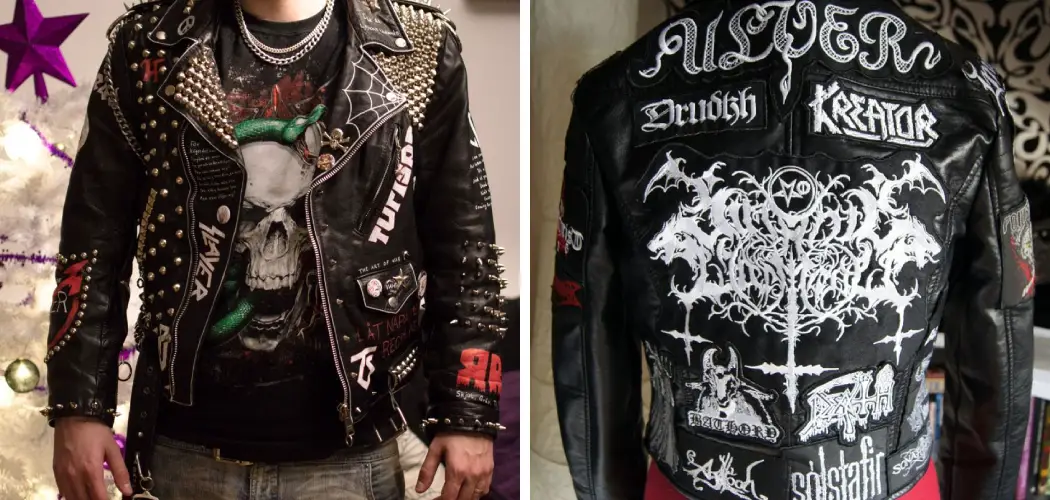Crafting a leather battle jacket is a personalized and iconic endeavor that merges fashion with individual expression and subculture. Rooted in the rebellious spirit of punk, metal, and alternative scenes, a leather battle jacket serves as a visual narrative, adorned with patches, studs, and embellishments that represent one’s musical tastes, beliefs, and unique identity. In this comprehensive guide, we delve into how to make a Leather battle jacket, exploring the step-by-step process of selecting the right jacket, choosing patches and insignias, and strategically placing them for maximum impact.
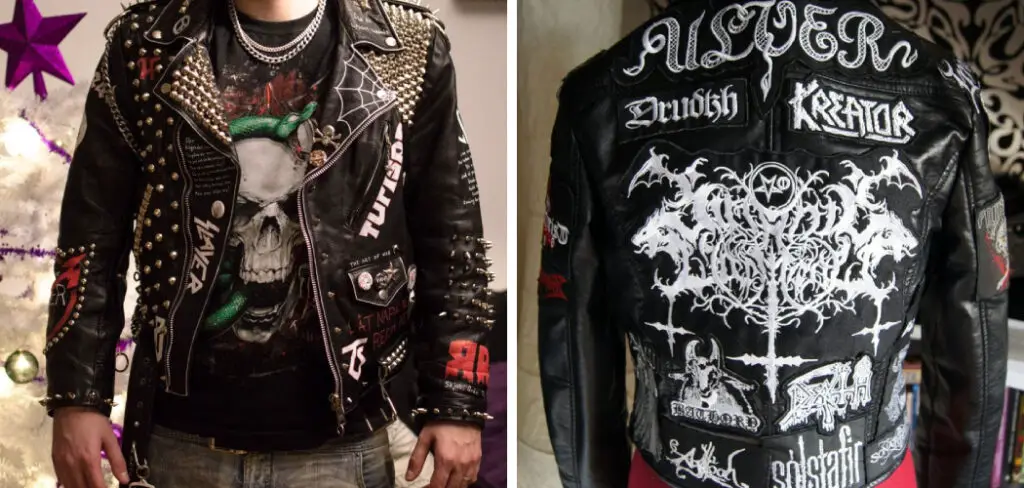
Whether you’re a devoted metalhead, punk enthusiast, or simply seeking a distinctive outerwear piece, uncover the secrets to fashioning a leather battle jacket that not only reflects your cultural affiliations but also stands as a wearable work of art, embodying the rebellion and camaraderie of a diverse and passionate subculture.
Definition and Significance of a Leather Battle Jacket
A leather battle jacket, also known as a ‘kutte’ or ‘colors’, is more than just a garment; it is a symbol of personal identity and communal solidarity within the music scene. Traditionally, it starts off as a plain leather jacket, which is then customized with an array of patches, each representing a favorite band, album, or message.
A rite of passage for many in the punk and metal subcultures, the jacket becomes a canvas, chronicling concerts attended, musical preferences, and often, the wearer’s philosophical or political leanings. This vestment is significant as it represents a visual dialect spoken amongst a like-minded collective, a form of non-verbal communication that proclaims one’s allegiances and interests to the community, reinforcing the bond between members of these eclectic music scenes.
Historical and Cultural Context
The origins of the leather battle jacket are steeped in the countercultural movements of the 1960s and 70s, where disaffected youth began to wear customized denim and leather as insignias of rebellion against mainstream norms. With the explosion of punk in the mid-1970s, the jacket emerged as a symbol of non-conformity, an armor against the cultural establishment. As heavy metal music evolved, the leather jacket transitioned from punk’s ripped and pinned aesthetic to the adorned and heavily structured centerpieces seen in the metal scene.
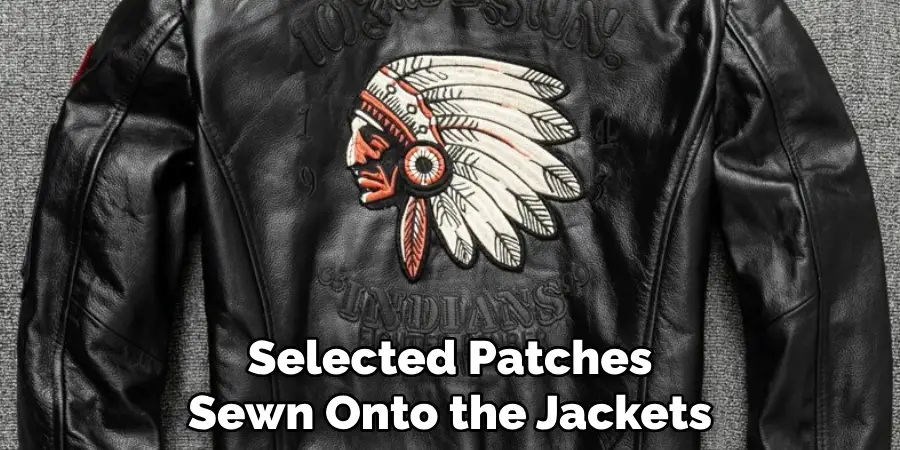
The heavy studs, intricate artwork, and carefully selected patches sewn onto the jackets were not merely decorative; they were—and remain—emblems of cultural resistance and identity, representing a legacy inherited from past generations that shapes the garments’ veneration today. This custom piece speaks loudly of the individual’s loyalty to the subcultural tribe, creating a visual and cultural connection between fans globally, transcending language and cultural barriers through shared symbolisms and a mutual love for the music.
Understanding Leather Battle Jackets: Materials and Construction
Before embarking on the journey of creating your own leather battle jacket, it’s important to understand the materials and craftsmanship that go into its construction. A high-quality leather jacket serves as the foundational canvas – durable, timeless, and endlessly customizable. The robust nature of leather not only offers protection and longevity but also beautifully ages over time, recording each crease and mark as a story of the wearer’s experiences.
When selecting the right leather jacket, consider its weight, grain, and flexibility to ensure it will hold up to the rigorous task of bearing the many patches and metal adornments without sacrificing comfort. The next step is to choose the patches, which ideally are made from sturdy fabric that won’t fray easily and using inks that withstand the elements, preserving the vibrancy of the graphics. Metal studs, chains, and spikes are not only decorative but also functional, providing additional structural support and giving the jacket its characteristic edge.
Putting together a leather battle jacket is as much about the artistry of placement and personal expression as it is about quality materials and assembly. This leather canvass eventually becomes a unique testament to the individual’s journey, taste, and commitment to the subculture they are part of.
Characteristics and Features
The defining characteristic of a leather battle jacket is its heavy customization, which allows wearers to display their personal history and affiliation with different bands or movements. The fundamental feature of the jacket is the use of patches, often band logos or album art, that serve as a visual representation of the wearer’s musical taste. These patches vary in size, shape, and color, and are typically arranged and sewn onto the jacket by the wearer themselves, which adds to the personal value and uniqueness of the garment.

Another distinct feature is the addition of metallic studs and spikes, which are not only aesthetically pleasing but also functional, reinforcing the jacket’s structure. These metal embellishments can be found on collars, lapels, and even across the back, contributing to the battle jacket’s tough and resilient image. The jacket often incorporates other materials like denim, chains, and hand-painted art, which highlight creativity and skill.
Battle jackets are also known for their durability. Designed to withstand the rigors of raucous concerts and festivals, they are made with robust leather that can endure wear and tear, amplifying their look as they age. This aged, worn-in aspect is a key feature, demonstrating authenticity and commitment to the lifestyle. Together, these characteristics and features create more than just a piece of clothing; they forge a powerful symbol of identity and rebellion within the music subcultures.
Types of Leather Used
The materials chosen for a leather battle jacket are as vital as the insignia it carries. The types of leather commonly employed reflect not just the owner’s style but also their commitment to durability and comfort. Full-grain leather is often the preferred choice due to its thickness and resistance to wear, allowing it to endure the energetic environment of concerts and festivals.
Top-grain leather, slightly thinner and more pliable, is also a popular option, offering a balance between durability and ease of movement. For those seeking a more affordable or ethical alternative, faux leather provides a viable substitute that can still withstand the application of heavy adornments. Ultimately, the leather’s quality significantly influences the jacket’s longevity and its capacity to become more distinguished and characteristic with each event it endures.
10 Methods How to Make a Leather Battle Jacket
1. Selecting the Right Jacket:
Choose a leather jacket that suits your style and fits well. Classic styles like biker or bomber jackets work well, offering a sturdy canvas for customization. Consider factors such as jacket size, fit, and the thickness of the leather. Take into account which cuts and shapes flatter your body shape best.
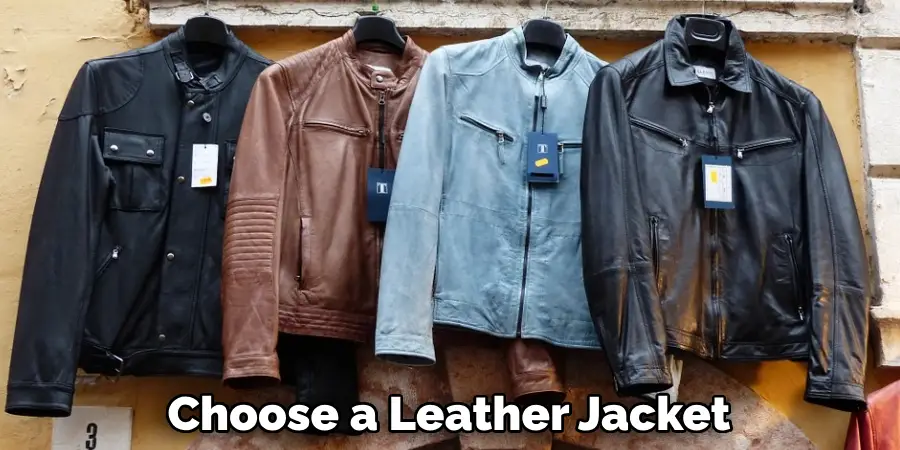
As important as the style of a jacket is, the fit is equally crucial. A well-fitted leather jacket should complement your body shape without feeling too tight or too loose. Make sure to try on different sizes and styles to find the perfect fit for you.
When it comes to leather thickness, there are two main types: lambskin and cowhide. Lambskin is thin, lightweight, and soft to the touch, making it a popular choice for fashion jackets. On the other hand, cowhide is thicker and more durable, making it ideal for heavy-duty jackets like motorcycle or bomber jackets.
2. Gathering Patches and Insignias:
Collect patches and insignias that resonate with your musical tastes, beliefs, and interests. These can include band logos, album covers, and symbols representing your favorite genres. Explore online platforms, music festivals, and specialty stores to curate a diverse and meaningful collection.
You can also create your own unique patches and insignias using fabric, embroidery floss, or iron-on transfers. This allows you to add a personal touch to your collection and showcase your creativity.
In addition to traditional patches and insignias, you can also collect pins, buttons, and other small items featuring music-related designs. These can be attached to clothing, bags, or displayed on a pin board.
3. Planning the Layout:
Before attaching patches, plan the layout of your leather battle jacket. Lay the jacket flat and arrange the patches on the back, sleeves, and front to visualize the overall design. Consider balance, spacing, and the hierarchy of patches to create a cohesive and visually appealing layout. You may also want to consider the type and size of patches, as well as any color or theme schemes. While planning, keep in mind to leave some space for future patches or additions.
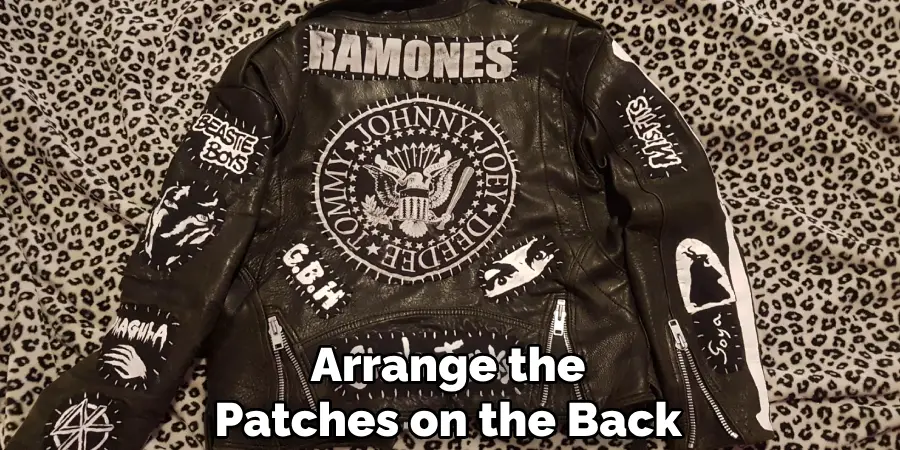
You can also use a pen or chalk to mark the placement of each patch on the jacket before attaching them permanently. This will help you ensure that your layout is just the way you want it before making any permanent changes. It will also serve as a guide when sewing or ironing on the patches.
4. Attaching Patches with Sewing:
Use a sturdy needle and strong thread to sew patches onto the leather jacket. This method ensures durability and longevity. Stitch around the edges of each patch, and reinforce high-stress areas. Experiment with different stitching patterns for added flair. Keep in mind that the stitches should be tight and close together to prevent the patch from coming loose.
In addition to sewing patches onto a leather jacket, you can also use other methods such as iron-on patches or fabric glue. Iron-on patches require a heated iron to bond the patch onto the leather surface. Follow the instructions on the packaging for best results. Fabric glue is another option, but it may not be as durable as sewing.
5. Iron-On Patches for Easy Application:
Iron-on patches are a convenient option for those who prefer a simpler application process. Place the patch on the desired location, cover it with a pressing cloth, and iron according to the patch instructions. This method is quick and effective, offering a secure bond to the leather.
Iron-on patches come in a variety of designs and can be easily customized to suit your style. They are also great for fixing small holes or tears in leather, making them a cost-effective solution compared to purchasing new items. Additionally, iron-on patches are easy to remove without damaging the leather, allowing you to change up your look whenever you want.
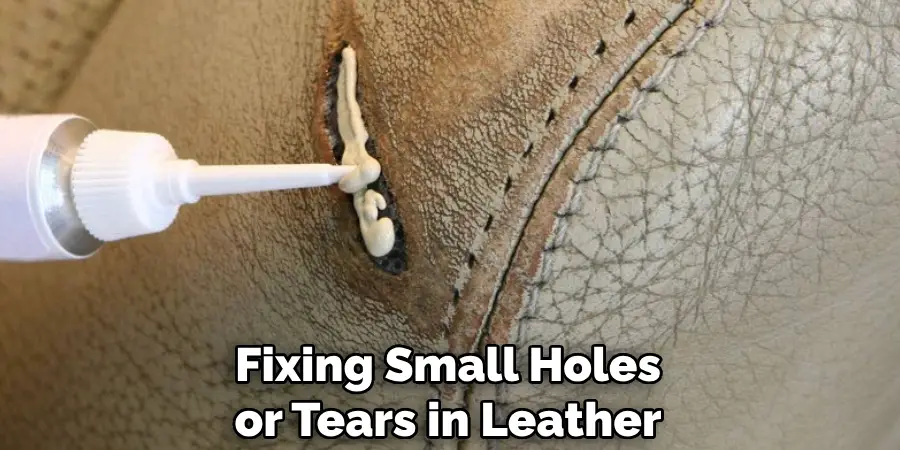
6. Adding Studs and Spikes:
Enhance the rebellious aesthetic of your leather battle jacket by adding studs and spikes. Use a stud applicator or hand-set each stud individually. Experiment with patterns and arrangements, incorporating studs along seams, collars, and pockets for a customized punk or metal look. You can also use metal spikes to add a more aggressive touch, placing them in clusters or along the length of the sleeves. Be careful when handling and attaching studs and spikes as they can be sharp and cause injury.
To keep your studs and spikes from falling off, you may want to double secure them with glue on the backside. Make sure to choose a strong adhesive that can withstand the wear and tear of your jacket. You can also use a needle and thread to stitch through the hole in the center of each stud or spike, further securing them in place. This method is especially useful for larger studs or spikes.
7. Hand-Painting and Custom Artwork:
Infuse your leather battle jacket with unique artwork by hand-painting designs. Use fabric or leather paints to create logos, symbols, or illustrations that reflect your personality. This method allows for maximum creativity and ensures that your jacket is truly one-of-a-kind.
Custom artwork on a leather battle jacket not only makes for a great conversation starter, but it also adds a personal touch to your outfit. You can choose to paint something that holds significance to you or simply go with a design that you think looks cool. The possibilities are endless when it comes to hand-painting your jacket.
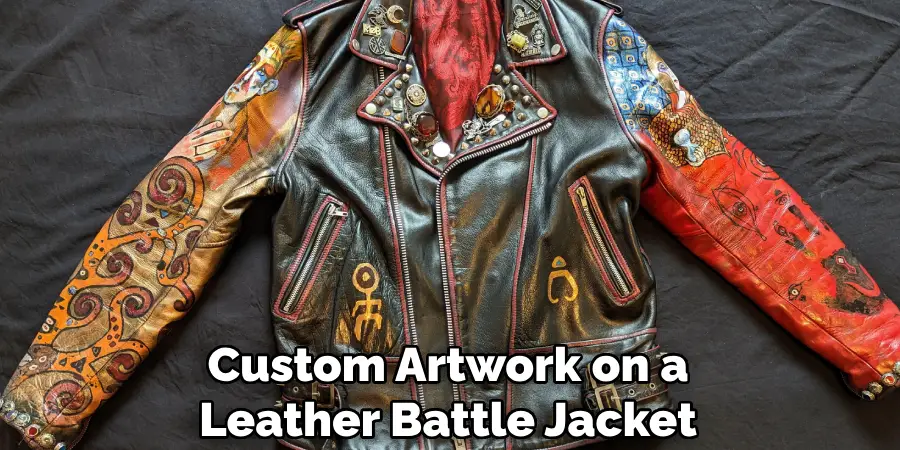
8. Embroidery for Intricate Detailing:
Elevate your jacket’s customization with embroidery. Stitch intricate patterns or text onto the leather using embroidery thread. This method adds a tactile and detailed element, providing a polished finish to your leather battle jacket.
Embroidery is a popular choice for customization, especially when it comes to leather jackets. It allows for detailed and intricate designs to be created on the jacket, adding a unique and personal touch.
One of the great things about embroidery is that it can be done in a variety of colors and textures. This allows you to really make your jacket stand out from the rest. You can also choose from a wide range of designs, from simple lettering to complex images.
9. Distressing Techniques:
Achieve a weathered and vintage look by employing distressing techniques. Use sandpaper, wire brushes, or razor blades to create intentional wear and tear on the leather. Focus on areas that naturally experience abrasion, such as edges and seams, to give your jacket a lived-in appearance. You can also add distressing to specific areas, such as elbows or shoulders, to mimic the natural wear and tear that occurs with use.
Distressing techniques not only add character and personality to your leather jacket but also make it unique. No two jackets will look identical, giving your jacket a one-of-a-kind quality. To achieve a more subtle distressed look, lightly sand down the leather or use a wire brush to create slight scratches. For a more dramatic effect, use a razor blade to make deeper cuts and scrapes.
10. Personalizing with Pins and Chains:
Further personalize your leather battle jacket by adding pins and chains. Pin collectible enamel pins to the lapels or pockets, showcasing your interests and affiliations. Attach chains to zippers or belt loops for an extra dose of edge and customization. Show off your unique style and make a statement with pins and chains on your leather battle jacket. Though these additions may seem small, they add a significant touch of personalization and individuality to your jacket.
Pins and chains are great ways to express yourself and make a statement with your leather battle jacket. With an endless variety of designs available, you can truly showcase your interests and personality. Whether you’re into music, movies, or politics, there’s a pin for every passion. And with different types of chains, such as chunky metal or delicate silver, you can add an extra layer of texture and visual interest to your jacket.
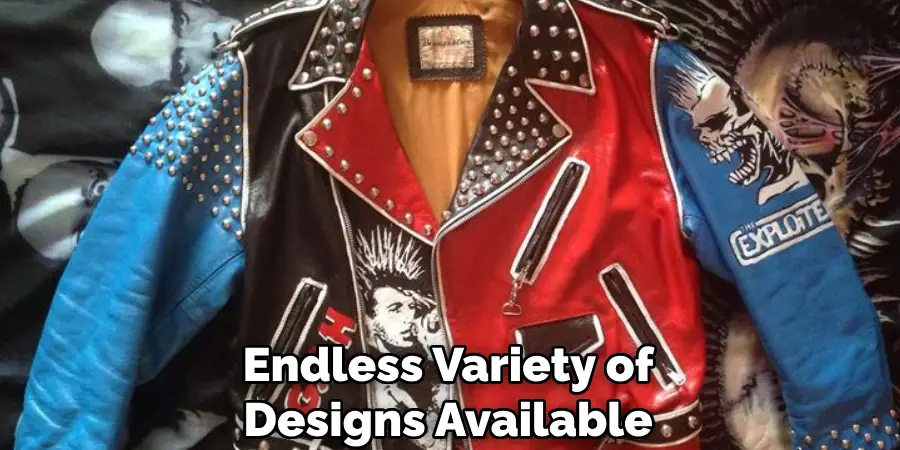
Conclusion
In conclusion, crafting a leather battle jacket is a labor of love that combines creativity, personal expression, and craftsmanship. By understanding the essence of battle jackets and following the outlined creation process, individuals can transform a simple leather jacket into a symbol of identity, rebellion, and camaraderie.
From meticulous planning and designing to skillful customization and construction, every step of the process contributes to the jacket’s unique character and significance. Embracing personalization and tailoring ensures the jacket not only reflects the wearer’s style but also offers comfort and functionality. Hopefully, this article gave you some helpful tips about how to make a Leather battle jacket successfully, so now that you have the proper knowledge on how to get the job done, why not give it a try today?

